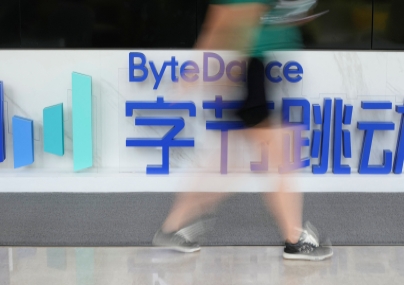Japanese industry will find it hard to forget the year 2011. In March came the earthquake which paralysed production, and rocked investor confidence. The yen, 85 to the U.S. dollar back in April, hit a post-World War II high of 75 in September, and hovered stubbornly in the region for the rest of the year as it wreaked havoc on the country’s export competitiveness. And all through the year, driven by a combination of the above factors and then some, Japanese companies embraced the warmer climes of Southeast Asia like never before as they purchased direct and indirect stakes in local companies, set up factories in and moved production to countries like Thailand, Vietnam and Indonesia.
Japanese interest in Southeast Asia is nothing new; Japanese companies were significant investors in Thailand back in the 1980s, and Japan was one of the earliest countries allowed to invest in newly reopened Vietnam. But observers say this last wave has been different. In Thailand, Cynthia Pornavalai, partner at Tilleke & Gibbins, has noticed a desire on the part of Japanese buyers to acquire majority stakes in companies; occasionally all the way up to 100 percent. “I think it’s become more of a control issue,” she says. “The Japanese want more control; they want more hands-on management.”
In Vietnam, Oliver Massmann,partner at Duane Morris Vietnam,notes that while Japanese companies historically preferred entering the market via direct investment such as starting their business in Vietnam from scratch, they now primarily focus on market entry through M&A activities.“By that means, they can make use of the existing market share of local companies,” he says. Massmann provides the example of Unicharm, a leading Japanese manufacturer of personal care products, which recently acquired a 95 percent stake in Diana, a local company that boasts a 40 percent share of the local hygiene products market.
Similarly, Kirin Holdings indirectly holds a 57 percent stake in Interfoods, one of Vietnam's leading soft drinks producers. In addition, Massmann notes that Japanese companies have also stepped outside their traditional comfort zone of manufacturing, and have diversified into a wide range of business sectors such as finance (for example, Nikko Cordial), real estate (Japan, Asia, Vietnam), telecommunications (NTT DoCoMo),and consumer goods (Kirin Holdings, Unicharm).
But that’s not all: Many of the Japanese companies heading out to Southeast Asia today are smaller, regional concerns that are looking to the ASEAN before even considering Tokyo, notes Yuto Matsumura, partner at Japanese Big Four firm Mori Hamada & Matsumoto (MHM).“The type of company looking to expand outside Japan is different now,” he says. “Earlier, it was the bigger companies. Now, regional companies want to go directly to Southeast Asia to take advantage of the upsurge in demand. We’ve seen a lot more small and mid-cap deals in recent months.”
As Japanese-owned industrial parks in Southeast Asia begin to swell with this upswing in interest in the ASEAN region, could law firms be far behind? MHM has already announced an office opening in Singapore early this year. But currently, the leader of the pack seems to be Nishimura & Asahi (N&A), which opened in Ho Chi Minh City in October 2010, Hanoi in August 2011 and planned a Singapore office in January 2012. “We decided to open two offices in Vietnam because many Japanese companies are now doing business in Vietnam, and other SE Asian countries., Naturally, these companies will need to be able to access reliable legal advice in this region, particularly from Japanese lawyers who can bridge the legal and cultural differences between these countries and Japan,” say Hikaru Oguchi and Kazuyoshi Furusumi, partners at N&A.Even regional firms are getting savvy to the demand; Tilleke & Gibbins, for example has a resident Japanese advisor called Torajiro Ohashi advising Japanese
entities that trade with or invest in Thailand, or wish to do so.
China plus one
For the past two decades, Japanese corporations have been opening factories and service businesses in China in order to access booming Asian markets, and take advantages of relatively low costs. But times have changed: The economy has matured, skills have increased, and wages have correspondingly climbed, ensuring that China can no longer be counted among Asia’s cheapest labour markets. So instead of relying on China as their sole outpost in Asia, Japanese companies are now looking to operate in countries such as Vietnam, Thailand, Indonesia and even India as part of a strategy termed as “China plus one.” These countries have less of a reputation for counterfeiting than China, generally stable governments, and younger and cheaper workers than China making them ideal locations to run operations. It is the reason why Japanese investment in key sectors in Vietnam continues to grow. In Thailand, there are an estimated 3,500 to 4,000 Japanese companies operating, according to Pornavalai from Tilleke & Gibbins.
Massmann from Duane Morris Vietnam says he believes that Japanese companies see Southeast Asia as a perfect manufacturing and processing base for them to implement their “China plus one” policy as insurance against their investments in China. “For a country that ultimately depends nearly 100 percent on importing its resources and offshore production because of its geographic condition, Southeast Asia is the top diversification place to be in after India,” he says. “Obviously, the Japanese economy’s bouncing back and stabilisation since the third quarter of 2011, the yen’s appreciation, and the long-term effects of the massive March 2011 earthquake also stimulated offshore investment globally in general and in Southeast Asia in particular.”
But the welcome goes beyond economics. Tran Tuan Phong, partner at Vietnamese law firm Vilaf says thathis country and Japan share a “special economic relationship” that makes Japanese companies feel more welcome than many others. “When Vietnam first opened up in the mid nineties, one of the key early investors was Japan,” he says. “Today Japanese companies are very well-received here, and so they are willing to take a long-term view.” Also, there’s every sign that the Vietnamese government is actively promoting investment by Japanese companies.
“We believe that Vietnam may be planning to set up some special industrial zones for Japanese companies,” says Thomas J. Treutler, partner and managing director of Tilleke & Gibbins Vietnam. “Vietnam views Japanese investors as good partners who abide by the rule of law, especially in terms of fulfilling tax obligations, transferring technology, and treating Vietnamese labourers well.” Matsumura of MHM concurs. “In general, the rules are the same in places such as Vietnam or Thailand regardless of which country the investors are from,” he says. “But in these jurisdictions, it appears that the government is more receptive to investment from our clients. In the end, it is a matter of attitude. If Japanese companies are initially well-received in a certain country, then you can be sure that other firms will follow.”
Matsumura also points out one important factor why many Japanese companies are choosing the ASEAN region over others: that of geographical proximity. “The United States, Europe, and South America are all still very attractive,” he says. “But psychologically, Southeast Asia seems that much closer.Also, there is the question of culture. Japanese companies take the attitude that ‘Asia is Asia;’ that Japan and the South East Asian region share a similar background and culture. Finally, competition in this region is a lot less intense than in other parts of the world. Our clients don’t feel the need to compete with other investors.”
Massmann from Duane Morris believes Vietnam, in particular, offers the complete package for Japanese investors.“I would say the main attributes are strategic location, investment-favoured regulatory framework, liberal market access commitments, political and social stability, as well as a young and well-educated population,” he says. “For example, Vietnam lies at the heart of Southeast Asia, and is the door for Japanese companies to gain access to a 600 million population market of South East Asian countries. In addition, Vietnam upon its WTO accession, gave the most liberal WTO’s service market access commitments. The country is even considered “on par” with Singapore in terms of market access liberalisation. It has also passed numerous bills and laws with the aim of granting incentives to foreign investments. Vietnam’s 86-million-strong population, half of which is under the age of 30, is also one of its advantages.”
Firming up plans
Meanwhile, law firms MHM and particularly N&A, have been the fastest off the blockwhen it came to opening up offices in the region. In late October, MHM announced plans for a Singapore office in early 2012 to go with its offices in Beijing (opened in 1998) and Shanghai (opened in 2005). It said that the Singapore office would meet the demand for services from Japanese lawyers in Southeast Asia, both from steadily expanding Japanese companies and regional companies seeking business opportunities in Japan. “The plan is to start small,” says Matsumura. “Initially, we will have two partners and one associate, all of whom will be Japanese. The office will primarily handle issues arising from Japanese investments in the region, the primary sectors being manufacturing, consumer products and services, as well as banking and financial institutions. It will also encompass the full gamut of services for project financing, dispute resolution including arbitration, and other kinds of work.”
“We hope to be a full-service firm in a miniature kind of way,” he adds.N&A, on the other hand, received its Singapore licence on Dec. 9, and aimed to have a fully operational office in January. In an interview with ALB shortly after the firm announced its Singapore plan, local office partner Kotaro Kubo talked about a steady influx of Japanese businesses establishing offices in the island nation which he expected would generate even more work than what the firm currently receives from Singapore-based businesses. “We expect our Singapore office to be a hub for the network that we have been developing in South East Asian countries just like the hub it has become for the Asian businesses of many Japanese companies,” he added.
N&A’s Singapore office will have only two or three lawyers initially, with the plan being to increase the number according to business requirements. Its focus will be on general corporate work involving neighbouring countries, including other ASEAN nations and India with an additional focus on arbitration at the SIAC and listings on the SGX.
Speaking broadly about N&A’s ASEAN strategy, Oguchi and Furusumi say that Japanese clients have a different set of requirements from other clients, and that makes it difficult for many law firms in Asia (including Western law firms) to cater to them. “Japanese clients place great importance on the effective advocacy of their position, attention to detail, and dedication to client service,” they say. “We plan to work closely withlocal law firms in Asia to identify leading lawyers in each specialty area. The idea is to develop closer links with these persons to seamlessly offer clients high quality, and effective legal representation throughout the region.” They also note another important factor – that the headquarters of a Japanese company frequently determines the outcome of most material business matters, even if such decisions relate to an overseas subsidiary or operation unit. “By locating attorneys in various parts of Asia who understand Japanese and local business practices, cultures and legal systems,we believe that we will be able to help smoothen the decision making process between the Japanese headquarters and its Asia-based subsidiaries or operation units,” he adds.
Curb the enthusiasm
Despite both the statistical and anecdotal evidence of Japanese investment gushing into Southeast Asia, Duane Morris’ Massmann points out that they should not expect an easy ride. “A complicated licensing procedure, regulatory inefficiencies, and extremely employee-friendly legislation are among the biggest headaches in Vietnam. It is also notorious for corruption and red tape,” he says.
"Unfortunately, it has not been successful in addressing these problems. In fact, all this is aside from an unstable macroeconomic environment, ranging from high-level inflation to the recent catastrophic devaluations of the Vietnamese dong, and poor infrastructure which are areas of major concern for investors.” Oguchi and Furusumi at Nishimura & Asahi also cite the uncertainty that comes with attempting to invest in Southeast Asia. “Generally speaking, although Thailand and Vietnam have written laws covering the various business relationships, the details of such laws are not well-developed and administrative authorities still have considerable discretion,” they say. “Hence, it is difficult to determine in advance how the various laws and regulations will be interpreted by the courts etc., and this impairs legal predictability.”
Therefore, whether all of this investment in Southeast Asia can lead to a profitable exercise for all concerned depends much on the host country. “Let’s take Vietnam as an example. As I have already mentioned, inadequate infrastructure, the weakness of supporting industries, and the lack of transparent legal framework are among key concerns they have in mind while deciding to invest in the country. Sadly, these hurdles have not been fully addressed for years,” says Massmann.
“On the other hand, Vietnam’s one-time outstanding advantages such as high investment incentives, political stability, and cheap workforce are no longer exclusive and distinctive as they were. In fact, any South East Asian country can offer the same to foreign investors for now. In this case, the Vietnamese should change their strategy while approaching Japanese investors in general and foreign investors in particular by actively responding to their concerns rather than merely ‘welcoming’ them in a general manner.” In a sense, the phenomenon of Japanese manufacturing companies moving into countries in the ASEAN region is seen to be benefiting the host country, and helping companies in “core” industries such as electronics or automotive manufacturing fill gaps leftby local companies thereby enriching the overall business ecosystem.
Massmann says that the existence of more Japaneseinvested companies means a greater demand for suppliers and companies in supporting industries. He adds that this industrial symbiosis will put the host country in the position of being an important link in the Asian value chain of Japanese companies. Local partners will end up having access to latest technology and advanced management experience, and he says he hopes they will then replicate the experience of Taiwanese and Korean companies of the 1960s and 70s. “I hope that these local companies can walk out of the shadows to take over the current job of their Japanese counterparts,” he says, but offers a caveat: “It is contingent on the various sectors in the host country. Take for example, the automotive manufacturer Daihatsu. In Vietnam, it has had to import everything right down to the smallest screw, while it is believed that at least eight or nine out of 10 Vietnamese companies are actively engaged in the real estate business.” ALB


